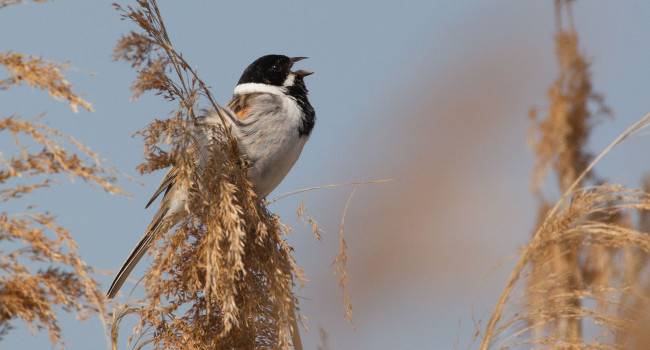Core Counts Methods
WeBS Core Counts are made using so-called ‘look-see’ methodology (Bibby et al. 2000), whereby the observer, familiar with the species involved, surveys the whole of a predefined area. Counts are made at all wetland habitats, including lakes, lochs/loughs, ponds, reservoirs, gravel pits, rivers, freshwater marshes, canals, sections of open coast and estuaries. Numbers of all waterbird species, as defined by Wetlands International (Rose & Scott 1997), are recorded. In the UK, this includes divers, grebes, cormorants, herons, Spoonbill, swans, geese, ducks, rails, cranes, waders and Kingfisher. Counts of gulls and terns are optional. In line with the recommendations of Vinicombe et al. (1993), records of all species recorded by WeBS, including escapes, are collected to contribute to the proper assessment of naturalised populations and escaped birds.
Detection and Counting
Most waterbirds are readily visible. Secretive species, such as snipes, are generally under-recorded. No allowance is made for these habits by the observer and only birds seen or heard are recorded. The species affected by such biases are well known and the problems of interpretation are highlighted individually in the Species Accounts. Most species and many subspecies are readily identifiable during the counts. Categories may be used, e.g. unidentified scoter species, where it is not possible to be confident of identification, e.g. under poor light conditions. Species present in relatively small numbers or dispersed widely may be counted singly. The number of birds in large flocks is generally estimated by mentally dividing the birds into groups, which may vary from five to 1,000 depending on the size of the flock, and counting the number of groups. Notebooks and tally counters may be used to aid counts. Training and resources are available, including video ID guides and occasional BTO training courses on Counting Birds and WeBS.
Timing
Counts are made once per month, ideally on predetermined ‘priority dates’. This enables counts across the whole country to be synchronised, thus reducing the likelihood of birds being double counted or missed. Such synchronisation is imperative at large sites, which are divided into sectors, each of which can be practicably counted by a single person in a reasonable amount of time. Local Organisers ensure coordination in these cases due to the high possibility of local movements affecting count totals. The priority dates are pre-selected with a view to optimising tidal conditions for counters covering coastal sites at high tide on a Sunday.
The dates used for individual sites may vary due to differences in the tidal regime around the country. Coordination within a site takes priority over national synchronisation. Counts suspected to be gross underestimates of the true number of non-secretive species present are specifically noted, e.g. a large flock of roosting waders only partially counted before being flushed by a predator, or a distant flock of seaduck in heavy swell. These counts may then be treated differently when calculating site totals.
Data submission
PDF Guide to WeBS Online
count forms
Analytical Methods
WeBS methods
Further Reading
Bibby, C.J., Burgess, N.D., Hill, D.A. & Mustoe, S. 2000. Bird Census Techniques. Second Edition. Academic Press, London.
Holmes, J.S. & Stroud, D.A. 1995. Naturalised birds: feral, exotic, introduced or alien? British Birds, 92: 2-11.
Rose, P.M. & Scott, D.A. 1997. Waterfowl Population Estimates - Second Edition. Wetlands International Publ. 44, Wageningen, The Netherlands.
Vinicombe, K., Marchant, J. & Knox, A. 1993. Review of status and categorization of feral birds on the British List. British Birds, 75: 1-11.











Share this page